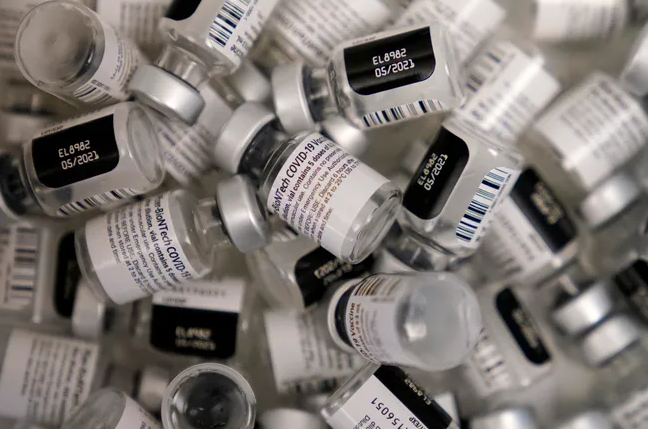By Pete Hudson

In the absence of a domestic supply of COVID-19 vaccine, Canada finds itself a begger in a global marketplace in which a handful of multi-national companies hold all the cards. Canada was forced into a frantic shopping spree, tossing money onto a roulette wheel of contracts with fingers crossed.
By February, Canada had signed contracts with seven companies involving 234 million doses with options for more. Moreover, and despite this expensive, overflowing shopping cart, there have been persistent difficulties with the supply chain arising out of dependence on facilities a continent away. Supply uncertainties have been compounded by the predictable roadblock of protectionism. The USA, source of the Moderna vaccine, maintains its America First stance. India has recently banned the export of AstraZeneca, and the EU, the source of the Pfizer vaccine, has legislated limits to exports if need be. Canada is a helpless bystander.
A longer term response has been to pursuade private sector producers to set up in Canada. Some limited success illustrates the strong bargaining power of the private sector in its ability to negotiate concessions. The United States company, Novavax, is pledged to begin vaccine production in the next year. The taxpayer is forking over for the cost of building and equipping the facility from which Novavax will operate. An agreement with French pharmaceutical giant, Sanofi, has just been announced whereby contributions of $415 million from the Federal government and $55 million from Ontario has induced Sanofi to expand its Toronto vaccine plant.
This strategy is flawed, in that its promise of a permanent, secure supply of vaccines is wishful thinking. And herein lies a part of the answer to the question of how Canada arrived at this vulnerable life or death state of affairs. Birthed in corporately funded think tanks, the belief that governments should stand aside and trust the private sector to meet all of our needs has become central. Successive governments were in the cheering section of the globalization trend associated with this ideology. Companies became able to move production across the globe wherever cheap labour, absence of regulation, and low tax regimes promised greater profit. For example, between 2010 and 2012 Merck, AstraZeneca and Sanofi all closed production facilities in Canada and moved them offshore. One of the complaints of the industry at the time was that its generous 20 year patent protection was about to expire on some very profitable “blockbuster” drugs. These examples of companies taking their marbles elsewhere, whenever conditions are perceived as not in their best interest, are an ever present reality. For example, recent proposals by the Federal body which has some powers to regulate drug prices, evoked threats from the industry, to avoid even marketing their drugs in Canada, let alone produce them here.
A desperate shopping around for vaccines is the best Canada can do for now. But to count on a relocation of portions of the private sector to Canada is no solution. Has the irony escaped us that Sanofi was one of the companies that fled Canada, and now Canada has to bribe it to return? And, given past and present experience cited here, can the claim of security of supply be trusted just because these companies return to Canada?
Proposing an alternative also adds to the story of how we got to this state. Canada once had a publicly owned capability to carry out research, production and distribution of pharmaceuticals. Two examples are the Institute Armand Frappier and the Connaught Laboratory; both privatized in the mid 1980s. The former was sold to UK based GlaxoSmithKline. Piling irony on irony, the Connaught lab ended up owned by Sanofi.
Given the difficulties of private sector control over pharmaceutical production, might we look to some return to public sector ownership? Before this proposition is dismissed as heresy, surely one of the messages of COVID-19 has been the realization that government is the only institution capable of leading a coordinated response? More specifically, let’s look at the outstanding record of the Connaught Laboratory. When established in 1913 it developed a vaccine for diphtheria. It produced affordable treatments and vaccines for tetanus, typhoid and meningitis. It played a major role in the development of penicillin and polio vaccines. It also contributed to the eradication of smallpox.
Beginning with the development of the diphtheria vaccine, because few could afford the one on offer from the private sector, the Connaught Laboratory’s 70 year contributions to life saving pharmaceuticals were based in the principle of need, not profit. The model is looking increasingly attractive.
Pete Hudson is a Senior Scholar in the Faculty of Social Work University of Manitoba, and a Research Associate with the CCPA Manitoba.


